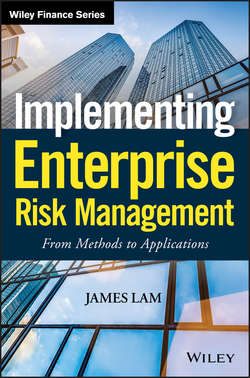Читать книгу Implementing Enterprise Risk Management - Lam James - Страница 7
На сайте Литреса книга снята с продажи.
Part One
ERM in Context
CHAPTER 1
Fundamental Concepts and Current State
INTRODUCTION
ОглавлениеIn October 1517, Ferdinand Magellan requested an investment of 8,751,125 silver maravedis from Charles I, King of Spain. His goal: to discover a westerly route to Asia, thereby permitting circumnavigation of the globe. The undertaking was extremely risky. As it turned out, only about 8 percent of the crew and just one of his four ships completed the voyage around the world. Magellan himself would die in the Philippines without reaching home.
What would motivate someone to undertake this kind of risk? After all, Magellan stood to gain only if he succeeded. But those long-term rewards, both tangible and intangible, were substantial: not only a percentage of the expedition's revenues, but also a 10-year monopoly of the discovered route, and numerous benefits extending from discovered lands and future voyages. What's more, he'd earn great favor with a future Holy Roman Emperor, not to mention fame and the personal satisfaction of exploration and discovery.
But I doubt that even all of these upsides put together would have convinced Magellan to embark on the voyage if he knew that it would cost him his life. As risky as the journey was, most risks that could arise likely appeared manageable. Magellan already had a great deal of naval experience and had previously traveled to the East Indies. He raised sufficient funding and availed himself of the best geographic information of the day.1
All in all, Magellan's preparations led him to the reasonable expectation that he would survive the journey to live in fame and luxury. In other words, by limiting his downside risk, Magellan increased the likelihood that he would reap considerable rewards and concluded that the rewards were worth the risk.
Whether taking out a loan or driving a car, we all evaluate risk in a similar way: by weighing the potential upsides and trying to limit the downsides. Like Magellan, anyone evaluating risk today is taking stock of what could happen if things don't go as planned. Risk measures the implications of those potential outcomes. In our daily lives, risk can cause deviation from our expected outcome and keep us from accomplishing our goals. Risk can also create upside potential. We will use a similar definition to define risk in business.
The purpose of this book is to provide the processes and tools to help companies optimize their risk profiles, but first we must have the necessary vocabulary for discussing risk itself. Then we can begin to construct a working model of an enterprise risk management (ERM) program, which we will flesh out over the course of this book. This chapter will cover the fundamental concepts and summarize ERM's history and current state of the art.
But first, some definitions.
1
Findlay, James. “Marvellous Countries and Lands,” Bienes Center, 2002.
